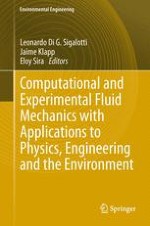The book presents a collection of selected papers from the I Workshop of the Venezuelan Society of Fluid Mechanics held on Margarita Island, Venezuela from November 4 to 9, 2012. Written by experts in their respective fields, the contributions are organized into five parts: - Part I Invited Lectures, consisting of full-length technical papers on both computational and experimental fluid mechanics covering a wide range of topics from drops to multiphase and granular flows to astrophysical flows, - Part II Drops, Particles and Waves - Part III Multiphase and Multicomponent Flows - Part IV Atmospheric and Granular Flows - and Part V Turbulent and Astrophysical Flows. The book is intended for upper-level undergraduate and graduate students as well as for physicists, chemists and engineers teaching and working in the field of fluid mechanics and its applications. The contributions are the result of recent advances in theoretical and experimental research in fluid mechanics, encompassing both fundamentals as well as applications to fluid engineering design, including pipelines, turbines, flow separators, hydraulic systems and biological fluid elements, and to granular, environmental and astrophysical flows.
